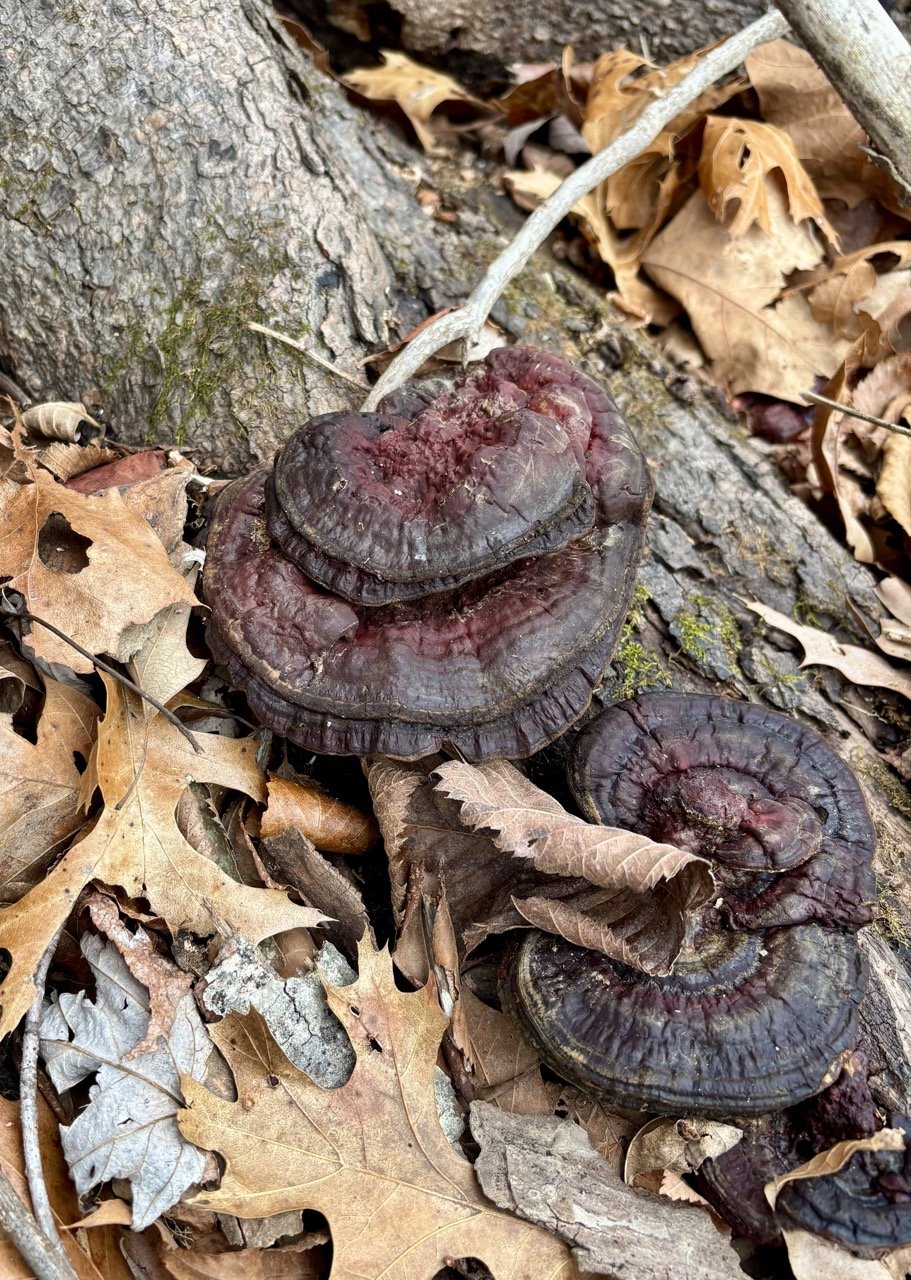Reishi, Ganoderma Lucidum
What is Reishi?
Reishi is a beautiful, glossy, polypore fungus friend of ours. Native to East Asia, it grows at the base of living and dead deciduous trees or around stumps. Naturally high in triterpene, Reishi is a powerful and well-known adaptogen, aiding the body in managing stress, fatigue, and overall mood.
Due to its high levels of polysaccharides and triterpenes, Reishi has a very bitter taste. Our favorite way to offset this bitterness (indicative of its healing power!) is with something sweet. That’s why we love our Red Reishi honey.
Reishi’s Rich History
Reishi is held in high regard in Eastern healing modalities, and has been in use for over 2,000 years. Specifically in China, Reishi or “Lingzhi”, is seen as the herb of immortality and longevity. In Chinese,“lingzhi” roughly translates to both spiritual potency and immortality.
In China, Reishi is regarded as the “herb of spiritual potency,” representing divine power, longevity, wellness, and success. Reishi is commonly used in Traditional Chinese Medicine (TCM) as a Qi tonic.
In TCM, Qi is life force energy. Reishi, according to TCM, tonifies the qi and calms the spirit. Reishi is seen as a neutral fungus–meaning it’s neither heating or cooling, but instead, balancing.
Images of reishi in artwork associated with Taoism began appearing around 1400 AD.
According to this source, “wild lingzhi is rare, and in the years before it was cultivated, only the nobility could afford it. It was believed that the sacred fungus grew in the home of the immortals on the “three aisles of the blest” off the coast of China.”
The Science Behind Reishi
Reishi is now a popular mushroom in the modern world for its adaptogenic effects on the body. But what, exactly, does reishi do to the body?
As previously stated, the main powerhouse players in reishi are bioactive components known as triterpenes. In particular, ganoderic acids A + D, but there have now been 140 different triterpene compounds isolated from Reishi extracts.
This multitude of triterpenes in Reishi aid the body in managing stress, fatigue, and overall mood. The high levels of polysaccharides are also powerful immune system modulators, promoting healthy blood flow (potentially lowering blood pressure), and having a protective effect on the liver.
We find Reishi’s immunity-bolstering powers quite remarkable, so we couldn’t help but include it in our Super Immunity Mushroom Extract.
But immunity isn’t all Reishi does! It’s also a powerful heart and liver protector, has been shown to support a healthy sleep cycle, and decrease stress levels. Reishi is truly a powerhouse when it comes to overall well being, which is why it’s in our Well Being Mushroom Extract, too!
Find your favorite Reishi sidekick.
Common Reishi/ Ganoderma Species in the Southeast US
Ganoderma lucidum
The “classic” Reishi; mostly found in cultivated contexts but occasionally on decaying hardwoods.
Bright reddish-brown, varnished, shiny cap with white margin when young.
Ganoderma tsugae
Typically grows on conifers, especially hemlock, but may be found occasionally in mixed forests.
Appearance is similar to G. lucidum with a varnished cap; medicinal properties are comparable.
Ganoderma sessile
Very common in the Southeast.
Grows on deciduous trees, particularly oak, maple, and sweetgum.
Often has a sessile, bracket-like form, reddish-brown to dark brown cap, sometimes with a lacquered sheen.
Ganoderma curtisii
Native to the Southeastern US.
Usually found on deciduous hardwoods, especially oak.
Cap is reddish-brown, less varnished than G. lucidum, with zoned concentric rings.
Ganoderma applanatum (artist’s conk)
Common in the Southeast on hardwoods.
Not typically considered a “true” medicinal Reishi, but it’s related.
Woody, perennial shelf fungus with a white pore surface underneath, often used for spore prints and art.

